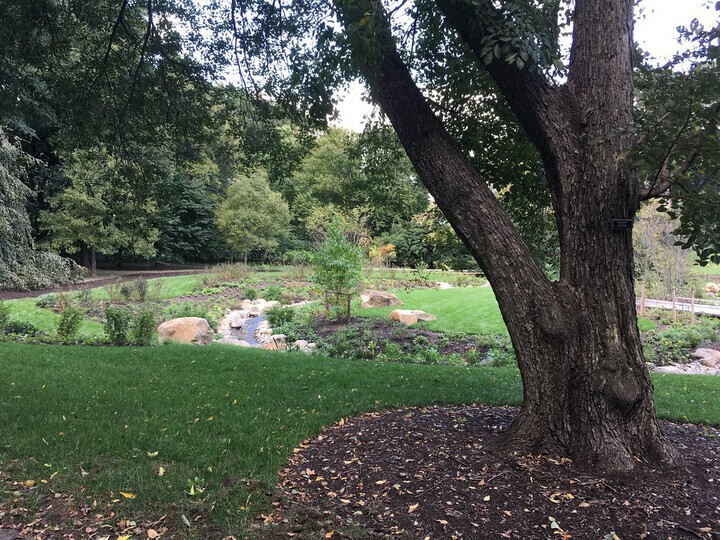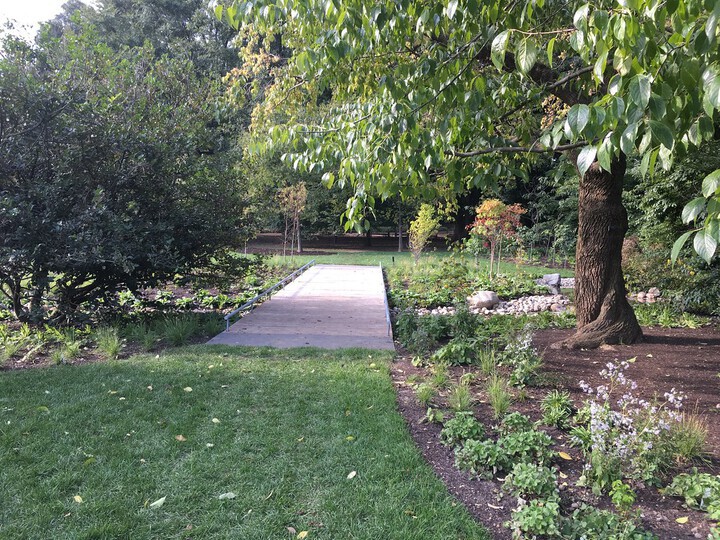When Brooklyn Botanic Garden was established, more than century ago, one of its main tenets was to provide not only a respite from the quickly developing city but also educational resources for plant lovers with all levels of knowledge, from laypeople to horticulturists to scientists.
To this end, the core collections in the central part of the Garden were organized by plant family. This portion of the Garden, also called the Systematic Section, was designed by landscape architect Harold Caparn to present living examples of closely related plants for side-by-side observation.

Today, this area, now called the Plant Family Collection, retains its original organizing principles, but as part of BBG’s Water Conservation Project, the area has been reconfigured to enhance the meandering brook that runs from the Japanese Hill-and-Pond Garden to the recently opened Shelby White and Leon Levy Water Garden. Walking paths have also been reworked to lead people into the collection rather than merely alongside it. “The visitor will follow the brook, passing over plank bridges and weaving through a lush garden,” says Jason Siebenmorgen of Michael Van Valkenburgh Associates (MVVA), the firm that oversaw the renovation and also designed the Water Garden. “The familiar large specimens will be there, but many will be revealed in a new way as you move through the landscape. And one dramatic change will be water flowing through the stream channel and over rocky falls.”
In his effort to present a living collection that would show how plants evolved, Caparn likely drew from collections like the Arnold Arboretum at Harvard University, which was established in 1872 and designed by Frederick Law Olmsted. The arboretum, also arranged by plant family, was inspired by similar gardens in Europe. Caparn wrote frequently in professional journals about the planning and philosophy behind the Systematic Section, and in 1915, he described his vision of a visitor’s experience.
Recent research in plant genetics has brought some changes to our understanding of the evolutionary history of higher plants, but the basic scheme still provides a useful primer in plant evolution. The current renovation presented an opportunity to incorporate new plantings into the historic layout, and MVVA worked closely with Rowan Blaik, BBG’s director of Living Collections, to identify new additions.

More than 150 existing trees and shrubs—the majority of those within the construction area—were retained in their original places, while another 27 were transplanted, says Blaik. Among them is a rare cherry species, Prunus hirtipes, which was transplanted within the rose family section. Thousands of new woody and herbaceous plants will also be added. In the willow family section, for instance, a number of low, sprawling species were planted among several taller willow trees, which diversified the collection and introduced a variety of leaf textures, says Siebenmorgen. In the witch-hazel family, several later-blooming varieties were planted near a large, mature Persian ironwood and the witch-hazels and winter hazels that were already present.
“The ironwood was damaged in a storm just prior to the work on the Garden but is recovering now with significant regrowth,” says Siebenmorgen. “It is surrounded by several very large and shrubby witch-hazels and winter hazels, all from the same family. These form green domes wider than they are tall, almost like fat clouds sitting on the lawn.” The newly opened area will also include along the stream some of the same iris and sedge species that are in the Water Garden to help tie the two spaces together. The design is also meant to draw people closer to the plants themselves and encourage a more thoughtful visit.

“Hopefully, visitors will see much more interplay between the different plant families and be able to experience the stream in a more visible way,” says Matt Bird, also of MVVA. “For those visitors who may be passing through casually, it will seem to blend easily with the adjacent spaces, but those who are more interested in the details of the plant families will still be able to have that experience.” He hopes longtime members will see the space with new eyes: “I’d imagine some are going to be surprised. I feel like we will be opening an entirely new space in the Garden.”